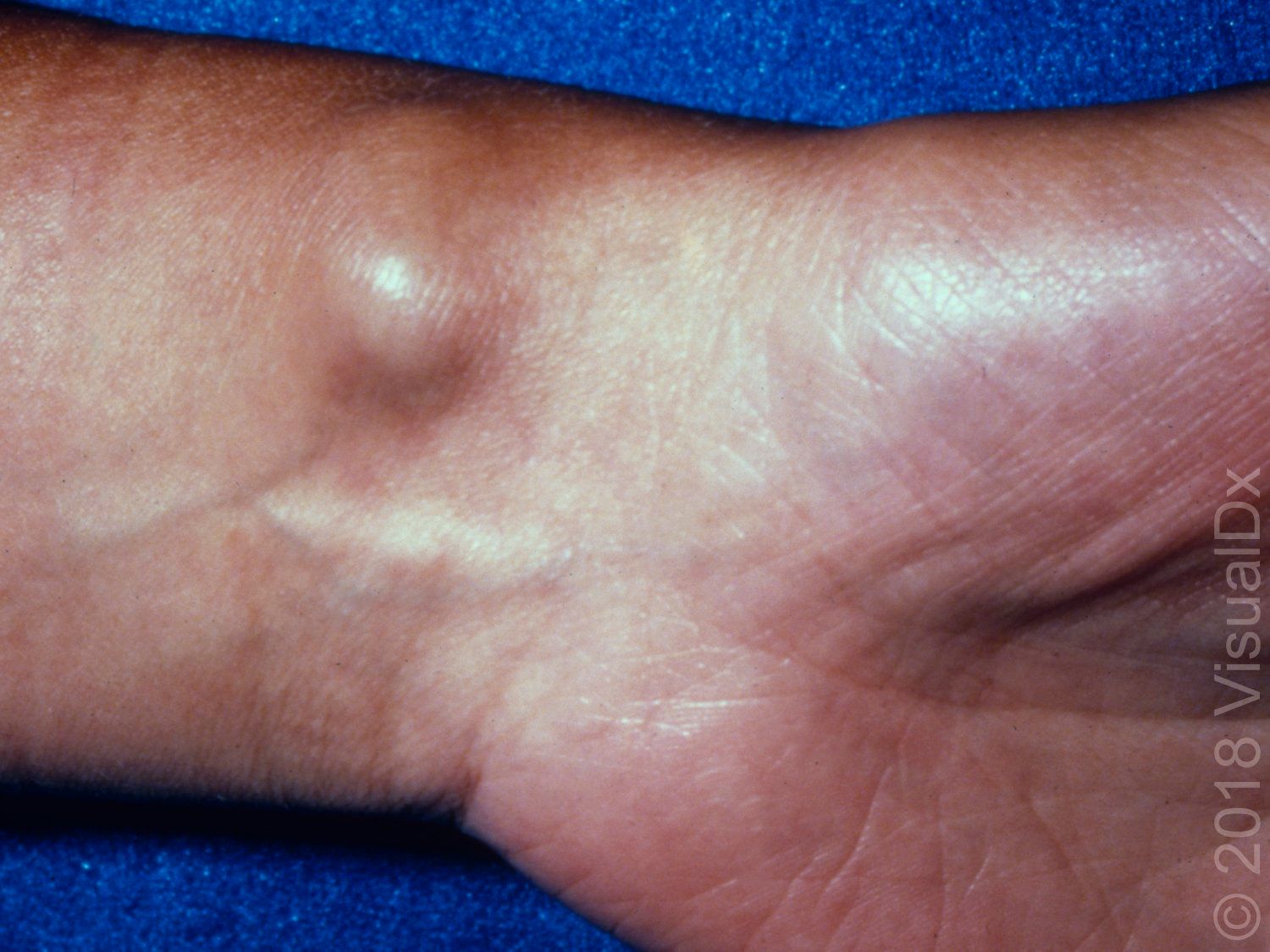- General Dermatology
- Eczema
- Alopecia
- Aesthetics
- Vitiligo
- COVID-19
- Actinic Keratosis
- Precision Medicine and Biologics
- Rare Disease
- Wound Care
- Rosacea
- Psoriasis
- Psoriatic Arthritis
- Atopic Dermatitis
- Melasma
- NP and PA
- Anti-Aging
- Skin Cancer
- Hidradenitis Suppurativa
- Drug Watch
- Pigmentary Disorders
- Acne
- Pediatric Dermatology
- Practice Management
Image IQ: Smooth nodule leads to distal numbness
A nodule develops over the course of months with pain, swelling, distal numbness and muscle weakness. What’s your diagnosis?
A nodule develops over the course of months with pain, swelling, distal numbness and muscle weakness. What’s your diagnosis? ? (Photo courtesy of VisualDx 2018)

A 31-year-old man went to his doctor to ask about a smooth nodule that developed on his wrist over the last couple of months. It began with minimal pain and swelling, then the lump evolved into distal numbness and muscle weakness.
What’s your diagnosis?
A. Giant cell tumor of the tendon sheath
B. Lipoma
C. Epidermoid cyst
D. Ganglion cyst
Click on the next page for the answer.
The correct answer is D: Ganglion cyst
Ganglion cysts are benign soft tissue tumors that most frequently occur around the dorsum of the wrist and on the fingers, although any joint can be affected. They can present as a swelling or as joint pain. Ganglion cysts are most common in patients aged 20-40 years but may affect any age group.
They usually present as cosmetic concerns but may uncommonly have associated neurologic or vascular symptoms. If the cyst compresses an underlying nerve, the patient may report distal numbness or weakness. Vascular compression may cause coolness or cyanosis of areas distal to the cyst. The size of the cyst may vary over time and can increase after activity.
Although the exact etiology is unknown, it is likely that a small tear forms in a joint capsule or tendon sheath, allowing extravasation of synovial fluid into the adjacent tissue. When the fluid reacts with local tissue, it becomes more gelatinous and a cyst wall forms. While it has been postulated that ganglion cysts are caused by chronic joint inflammation, this theory is less likely because inflammatory changes are not seen in ganglion cysts.
ICD10 Code: M67.4 – Ganglion
For more information about this quiz â specifically, differential diagnoses and pitfalls, clinical tests, management pearls, therapy and a complete list of references â visit VisualDx online.
